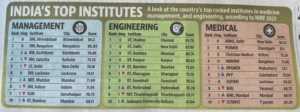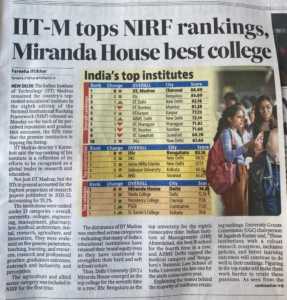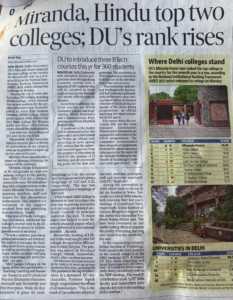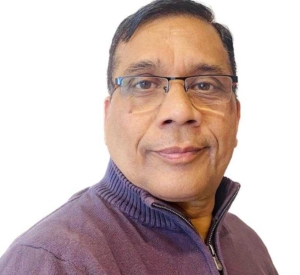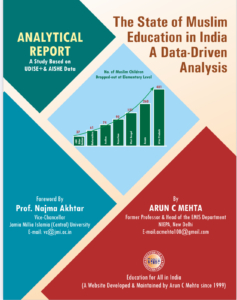India’s School Teachers Cross the 1 Crore Mark: What It Means for Quality Education
India’s School Teachers Cross the 1 Crore Mark: What It Means for Quality Education
Introduction
In a landmark achievement for India’s education sector, the total number of school teachers has surpassed the 1 crore (10 million) mark for the first time in the academic year 2024-25. According to the latest Unified District Information System for Education Plus (UDISE+) report released by the Ministry of Education on August 28, 2025, the country now boasts 1,01,22,420 teachers across over 14.71 lakh schools, serving approximately 23.29 crore (233 million) students. This represents a 6.7% increase from 94,83,294 teachers in 2022-23, marking steady progress in teacher recruitment and deployment. In 2023-24, India had a work fore of 8,07,600 teachers.
The UDISE+ platform, which Prof. Arun C Mehta helped nurture into official statistics over 15 years at NIEPA, provides real-time data on school education. This milestone aligns with the National Education Policy (NEP) 2020’s vision of equitable, high-quality education, emphasizing teachers as the “heart of the learning process.” However, as detailed in my UDISE+ 2024-25 analysis on Education for All in India, challenges like contractual hiring, uneven deployment, and post-NAS follow-ups must be addressed for true quality gains. This article explores the data, implications, and roadmap forward.
The Road to 1 Crore Teachers: Key Statistics and Trends
The UDISE+ 2024-25 report highlights robust growth under Samagra Shiksha, with 48.7 lakh teachers at secondary and higher secondary levels, 28.9 lakh at middle, and 23.7 lakh at foundational/preparatory stages. Single-teacher schools dropped 6% to 1,04,125, and zero-enrolment schools fell 38% to 7,993.
Yet, as Geeta Kingdon’s seminal work argues, the perceived shortage of about one million teachers in public elementary schools – based on 2019-20 data – may be overstated due to deployment inefficiencies rather than absolute numbers. Her analysis, hosted on Education for All in India website, reveals fiscal costs of over-hiring in some areas while vacancies persist elsewhere.
The table below summarizes total teacher trends based on UDISEPlus data:
| Year | Total Teachers (Lakh) | % Increase YoY |
|---|---|---|
| 2014-15 | 84.50 | – |
| 2018-19 | 97.00 | 14.79 |
| 2020-21 | 96.96 | – 0.04 |
| 2021-22 | 95.07 | – 1.95 |
| 2022-23 | 94.83 | -0.5 |
| 2023-24 | 98.08 | 3.4 |
| 2024-25 | 101.22 | 3.2 |
The Rising Role of Female Teachers: Trends and Importance
Female teachers now comprise 54.2% of the workforce, up from 52.3% in 2022-23 and a significant rise from 46.9% in 2014-15. This gender balance is vital: research shows female educators enhance girls’ enrolment and retention by serving as role models, fostering safe environments, and improving attendance – key to NEP 2020’s equity goals. In states with higher female representation, girls’ GER rises by up to 5-7%.
The chart below illustrates the upward trend in female teacher percentage:
This progress, driven by targeted recruitment, must continue to address rural-urban gaps where female teachers remain underrepresented.
Challenges: Contractual Teachers, Deployment Issues, and Quality Concerns
While numbers grow, quality lags due to the proliferation of contractual teachers—often 30-40% of the workforce in states like Uttar Pradesh and Bihar. These educators receive low salaries (₹5,000-15,000/month vs. ₹30,000+ for regulars), fewer benefits, and limited training, leading to high turnover (up to 20% annually) and motivation deficits. This impacts learning outcomes, as contractual hires correlate with 10-15% lower student performance in foundational skills.
Deployment remains a core issue: Despite 1 crore teachers, shortages persist in rural/tribal areas (PTR >30:1 in Bihar), while urban surpluses and anomalies like 308 teachers in 270 zero-enrolment Karnataka schools highlight misallocation. UDISE+ data urges rationalization under Samagra Shiksha to optimize distribution.
Post-NAS 2021 (revealing 40-50% competency gaps in Classes 3/5/8), follow-up activities include NISHTHA training for 50 lakh teachers on remedial pedagogies, state-level action plans for weak domains (e.g., math/language), and integration with NEP’s continuous professional development. Yet, only 75% teachers are professionally qualified, underscoring the need for sustained capacity building.
Improving Pupil-Teacher Ratios and Regional Insights
PTRs improved to 10:1 (foundational), 13:1 (preparatory), 17:1 (middle), and 21:1 (secondary), below NEP’s 25-30:1 norms. States like Odisha (97% retention) lead, but UP’s 9,508 single-teacher schools serve 6.2 lakh students inefficiently.
Conclusion: Toward NEP 2020’s Vision
Crossing 1 crore teachers is transformative, but equitable deployment, regularizing contractual roles, and robust post-NAS training are essential for quality. As per my analyses on Education for All in India, increased funding to 6% GDP will realize universal education by 2030. Download the full UDISE+ report here.

